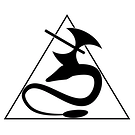The Urho3D front page lists support for Direct3D11 and OpenGL 3.2. So does Urho prioritize Direct3D? The OpenGL version is behind.
I know that OGRE 1.10 supports OpenGL 3.x, and I believe that OGRE 2.1 is OpenGL 4.5.
But does Urho perform better than Ogre 1.10 on OpenGL despite this? Howabout Ogre 2.0, or 2.1?
The reason I’m asking is because I’m trying to revive an abandoned open-source game project; Lips of Suna . It uses a custom game-engine with Ogre. I have been putting work into getting it to work with OGRE 1.10 (previously it was 1.9).
It’s a pain having to work with an abandoned game engine with zero support. I don’t even think it’s such a great engine anyway. Someone on a forum suggested the idea of porting it to Urho3D. After the initial work, this would be beneficial to the project if Urho really is well-suited. But I don’t want to go through all the work of doing that just to get worse performance.
I read that Urho 3D is “Greatly inspired by OGRE and Horde3D”. Does this mean that those two engines were used as a design reference? Is it likely that the new improvements in OGRE will come to Urho?







